
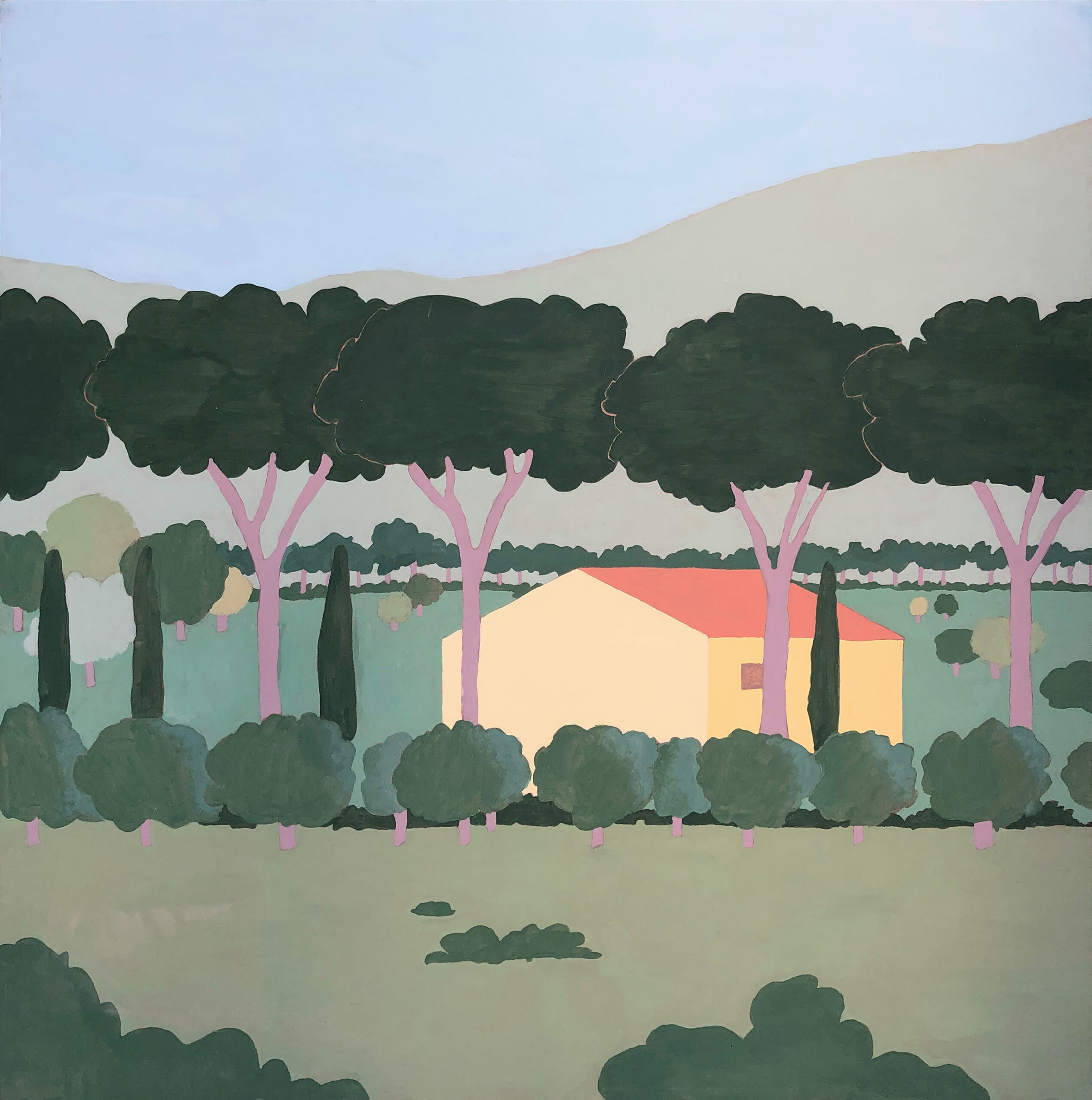
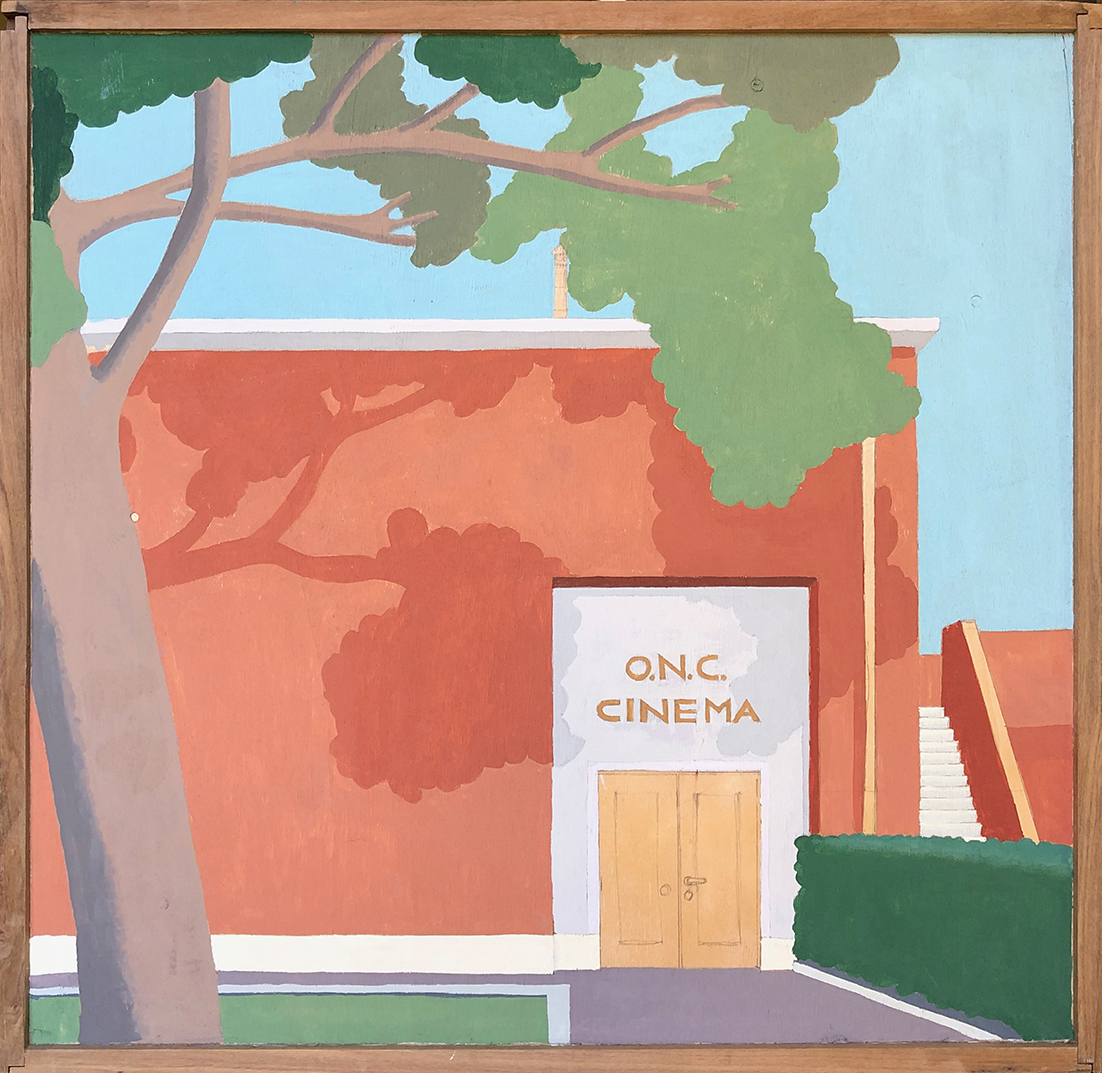
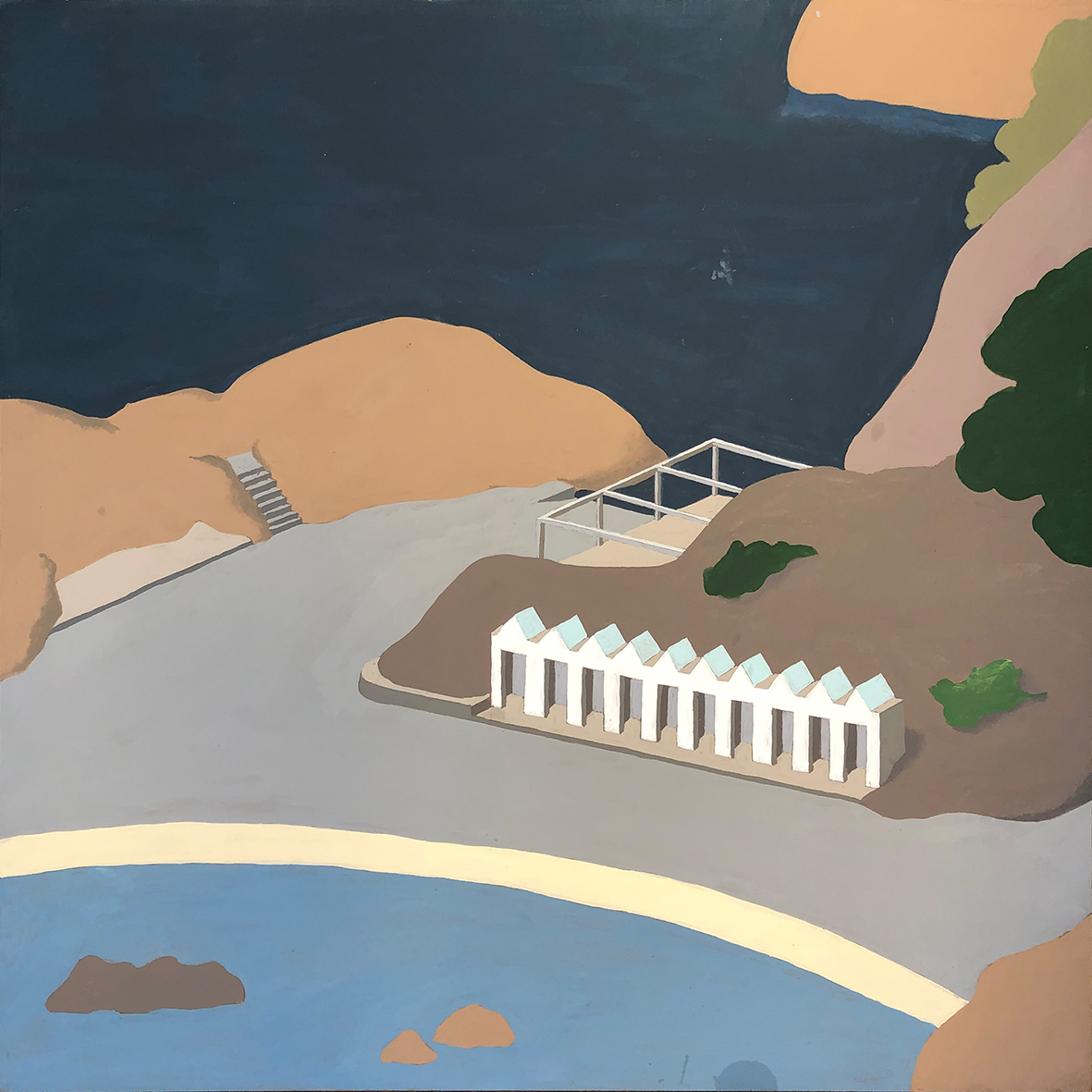
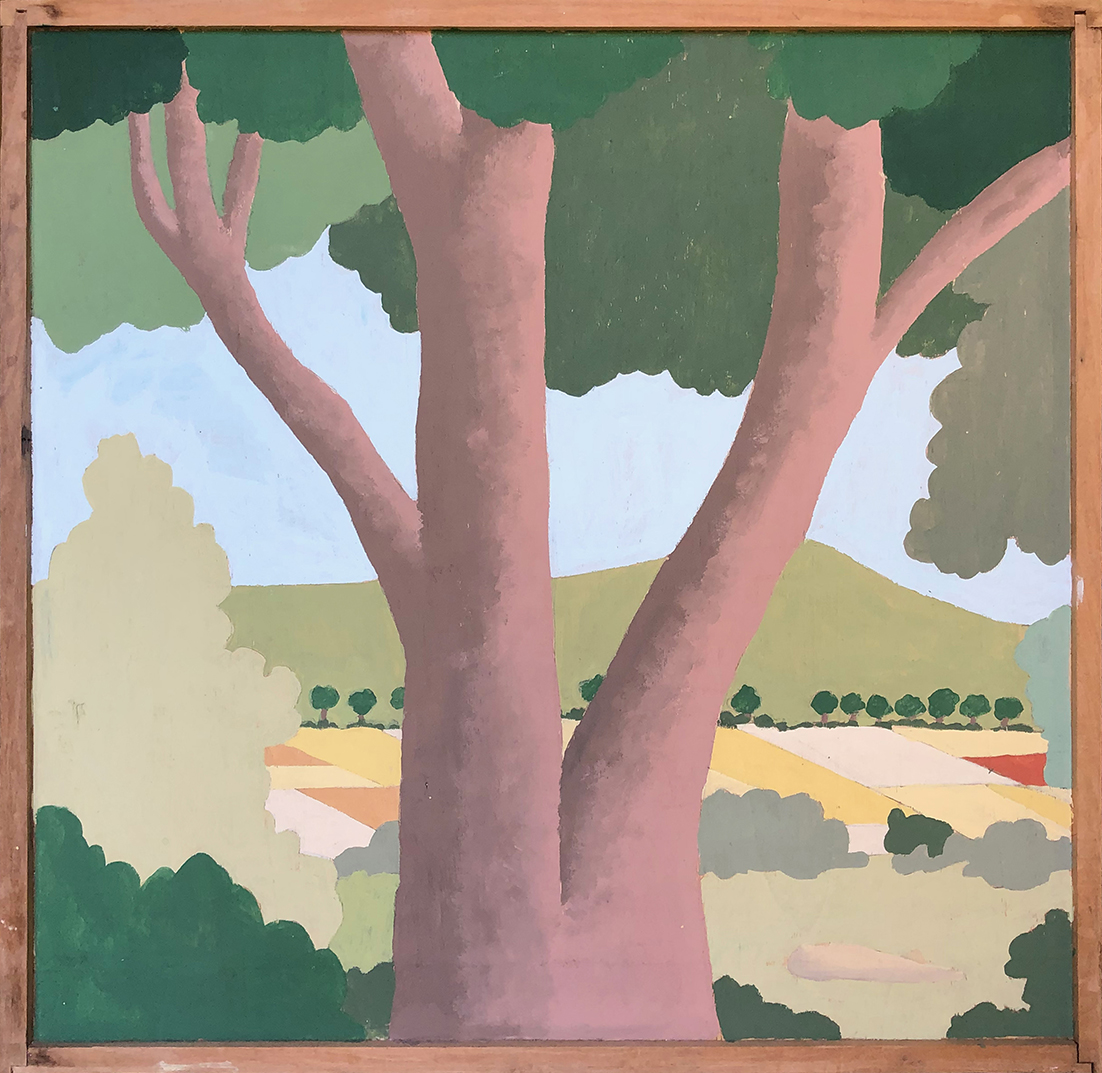
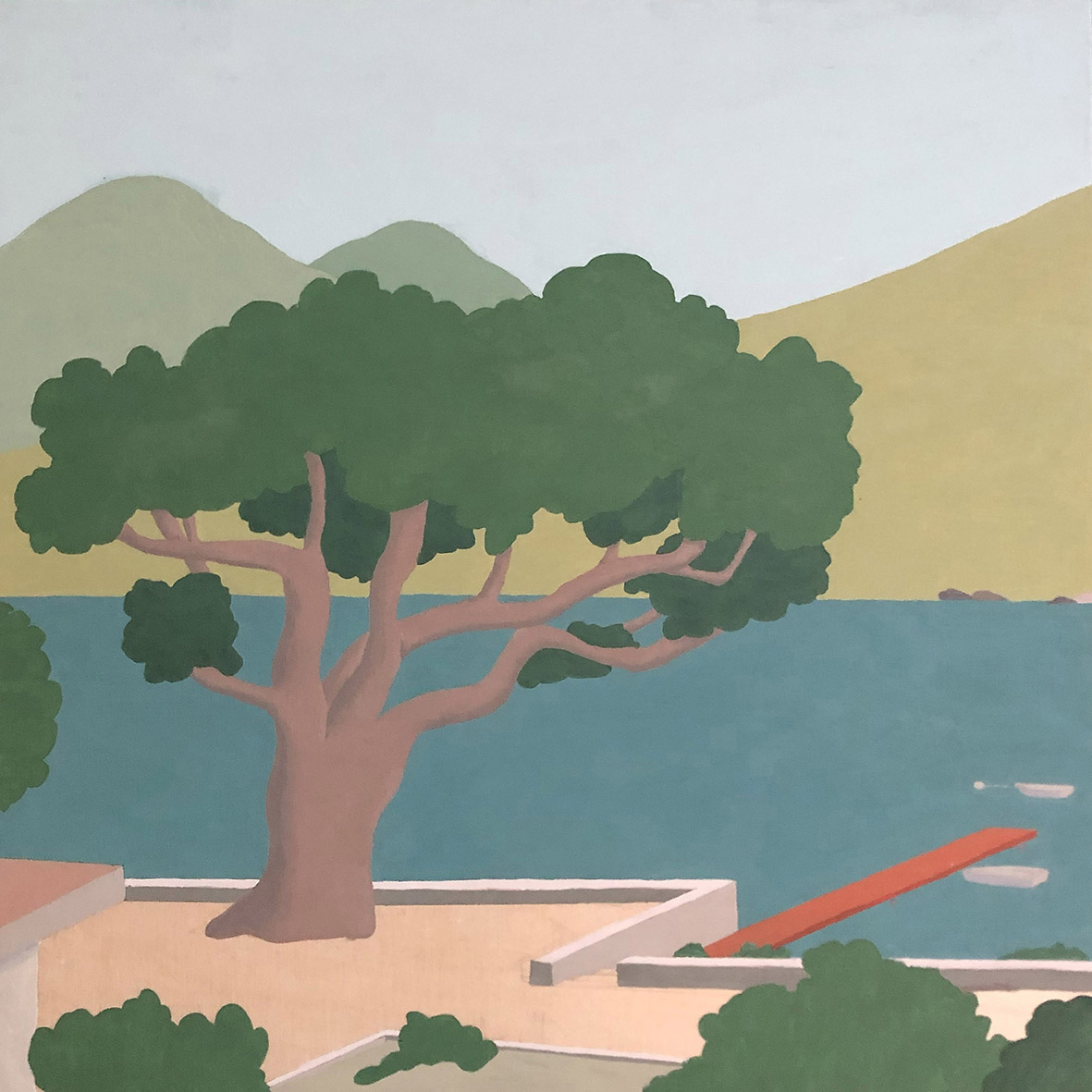
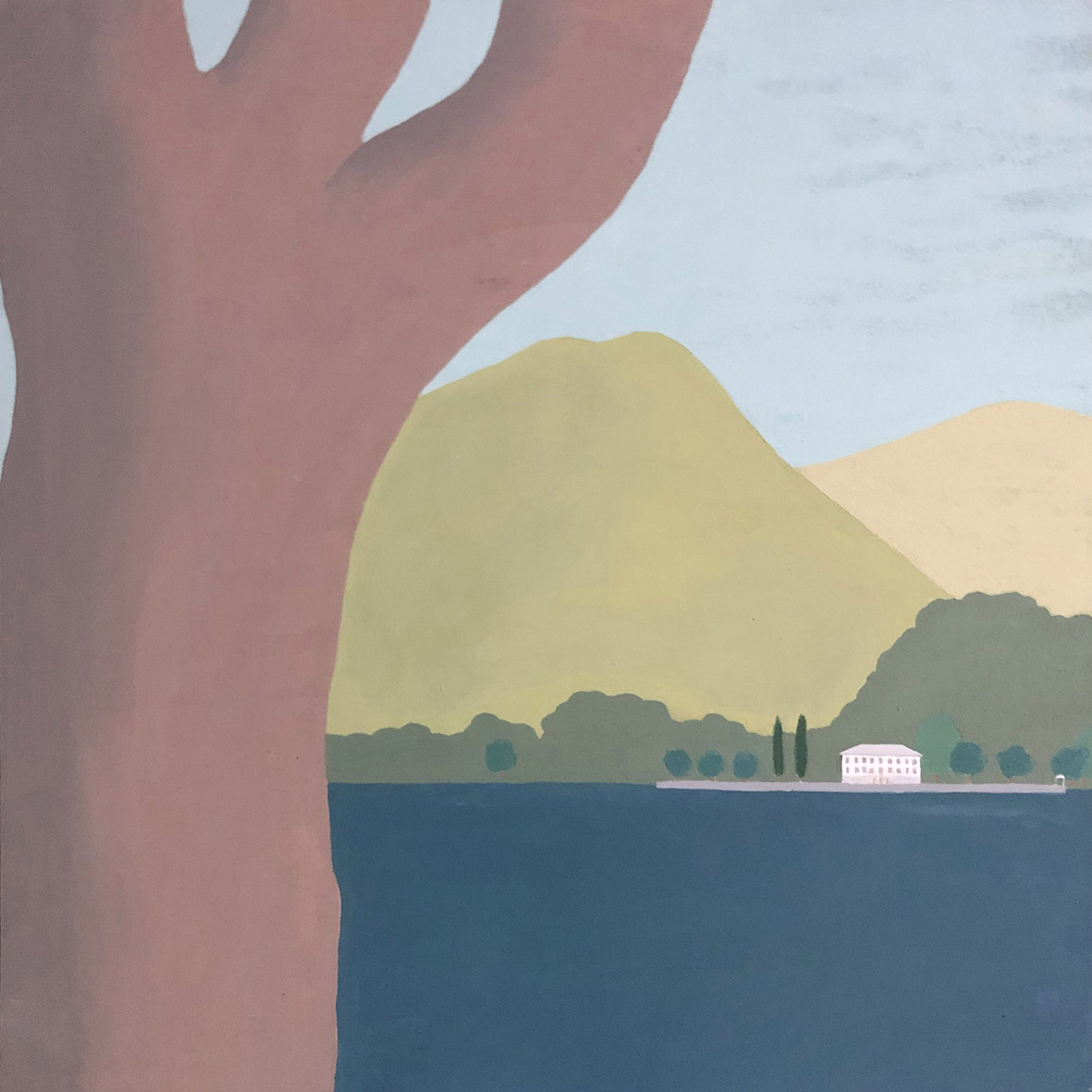
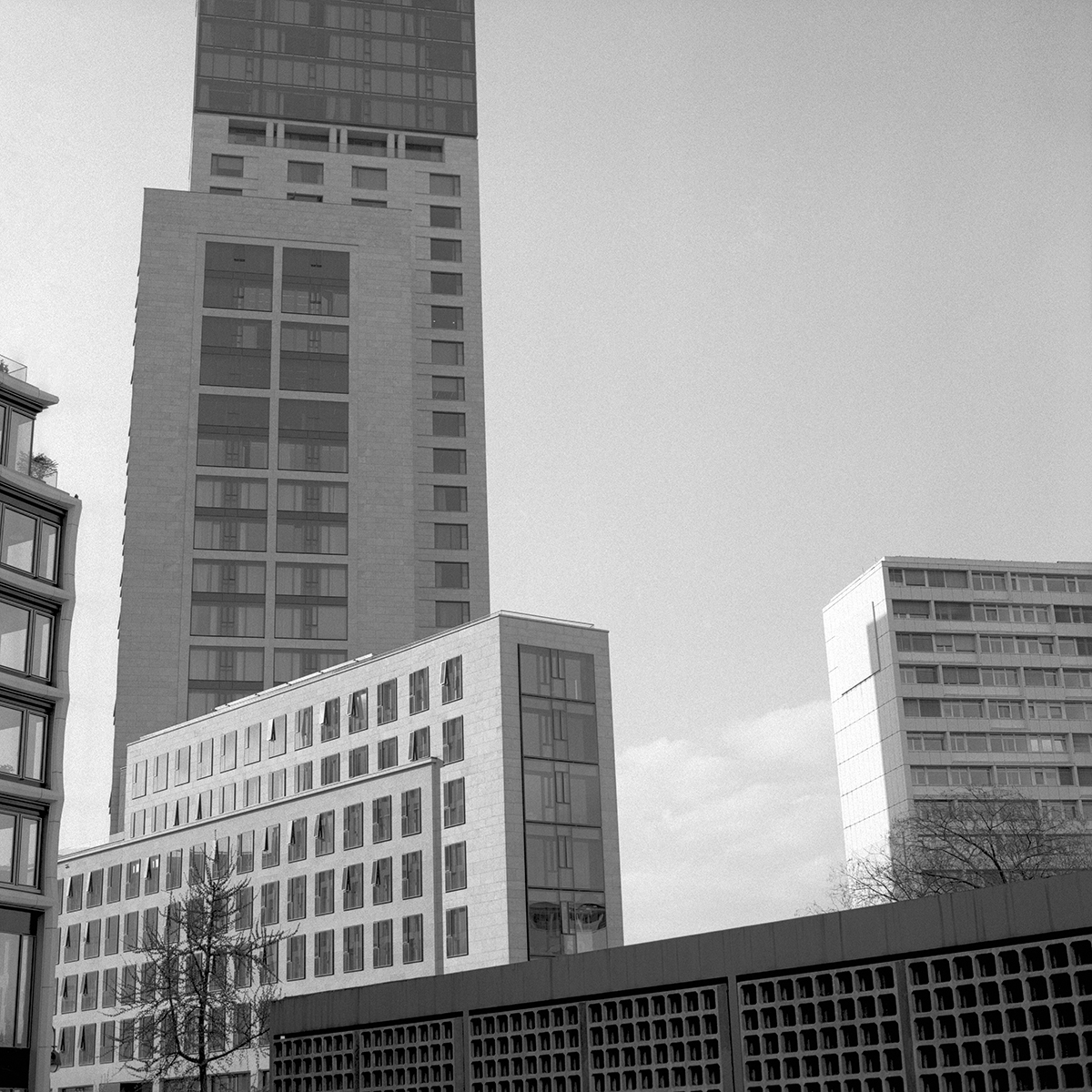
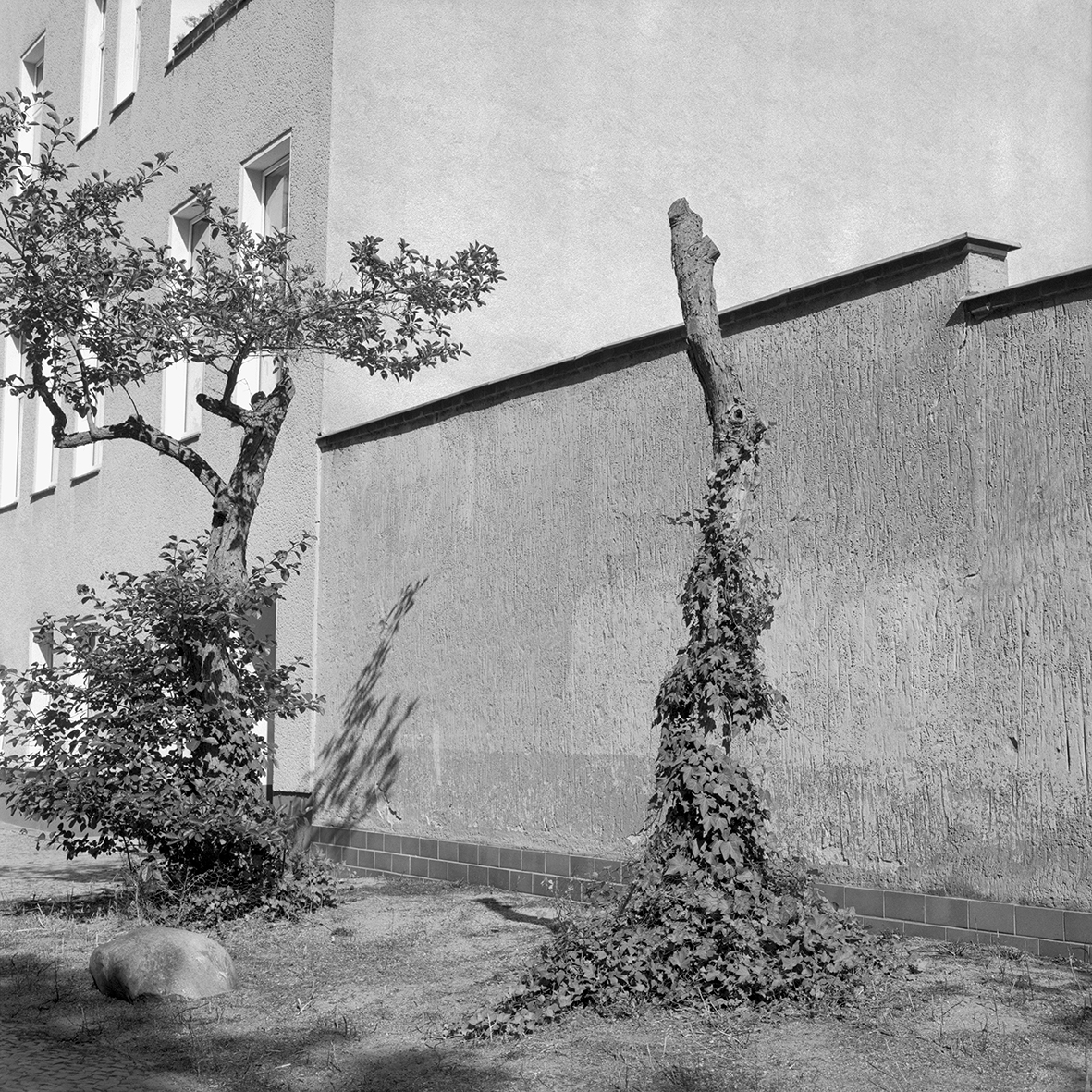
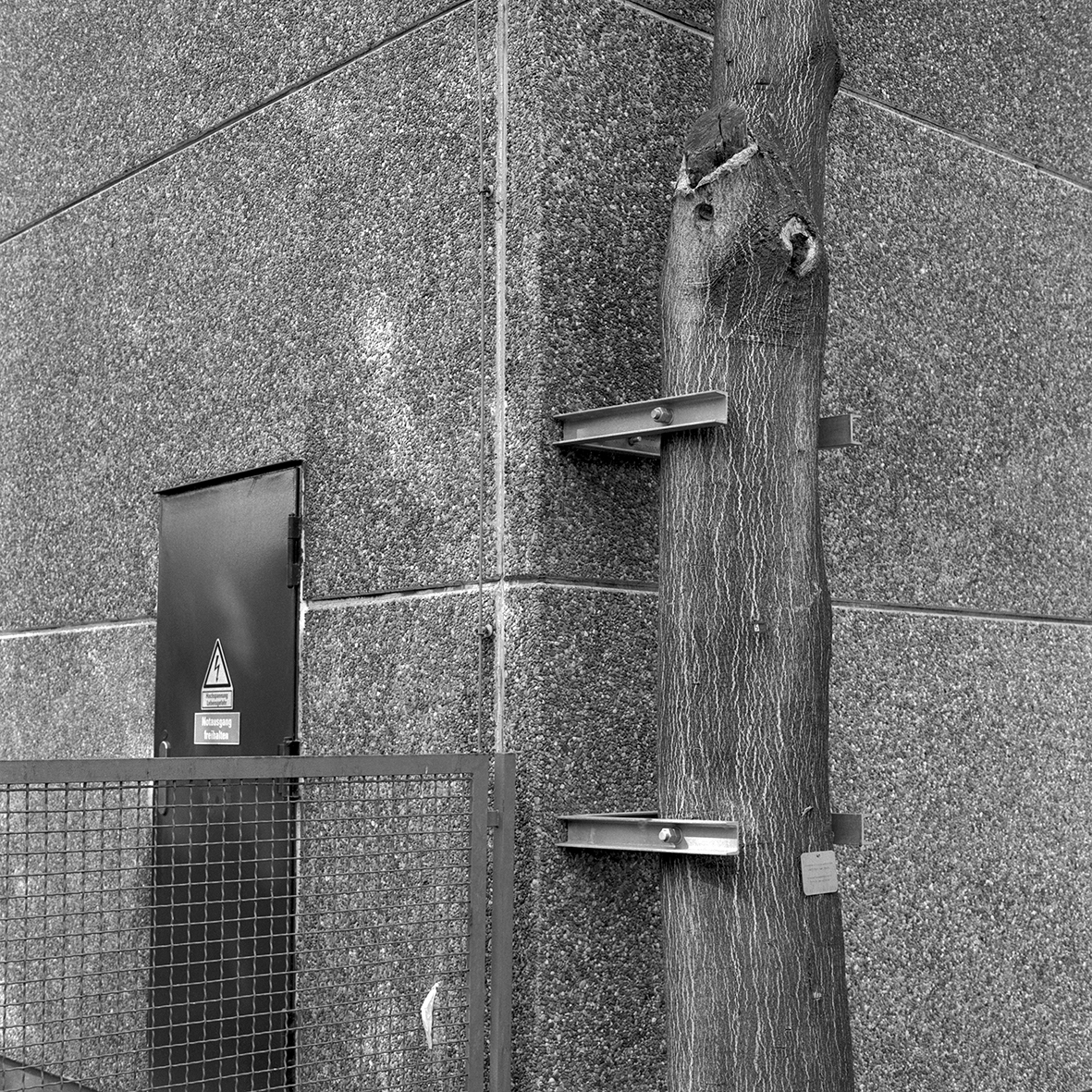
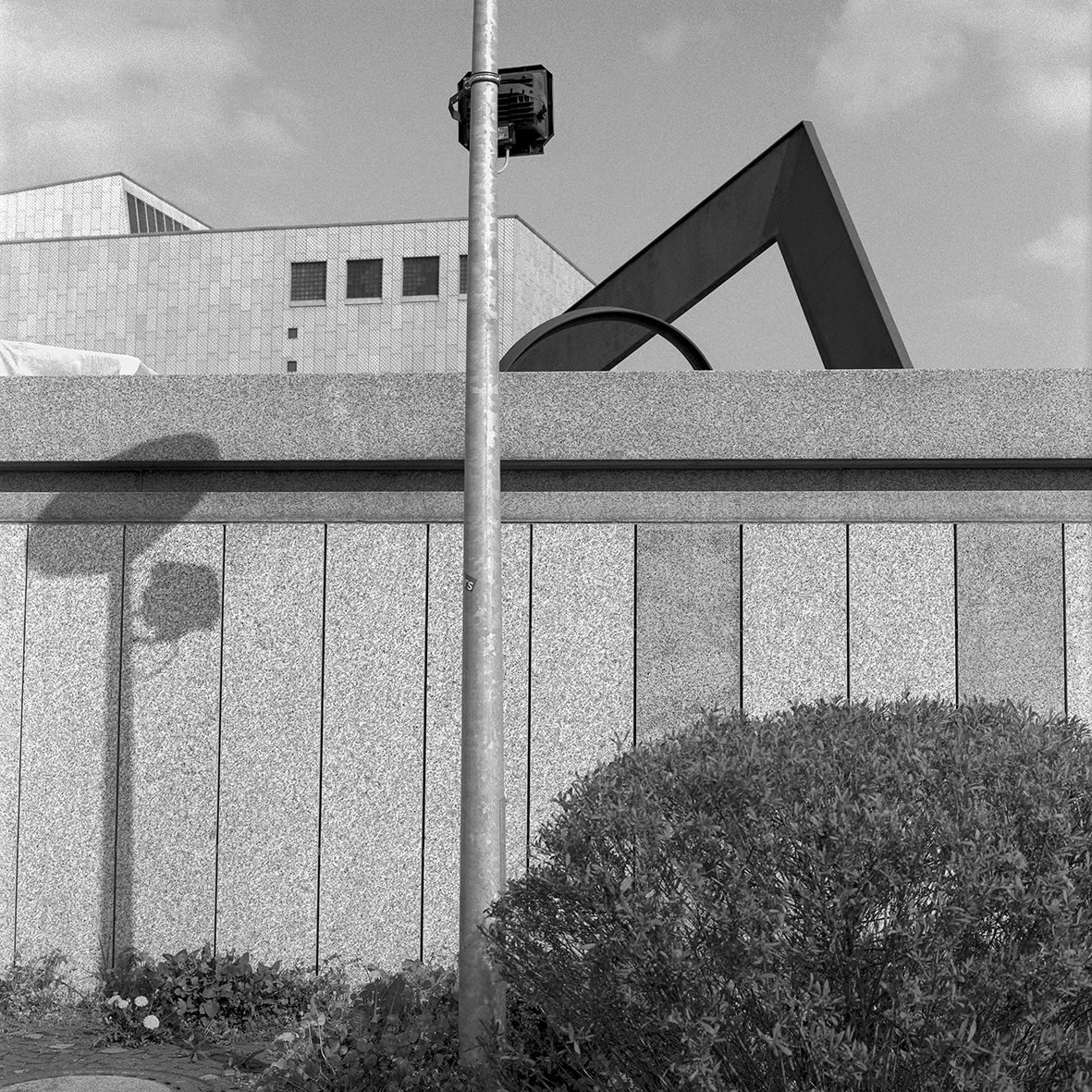
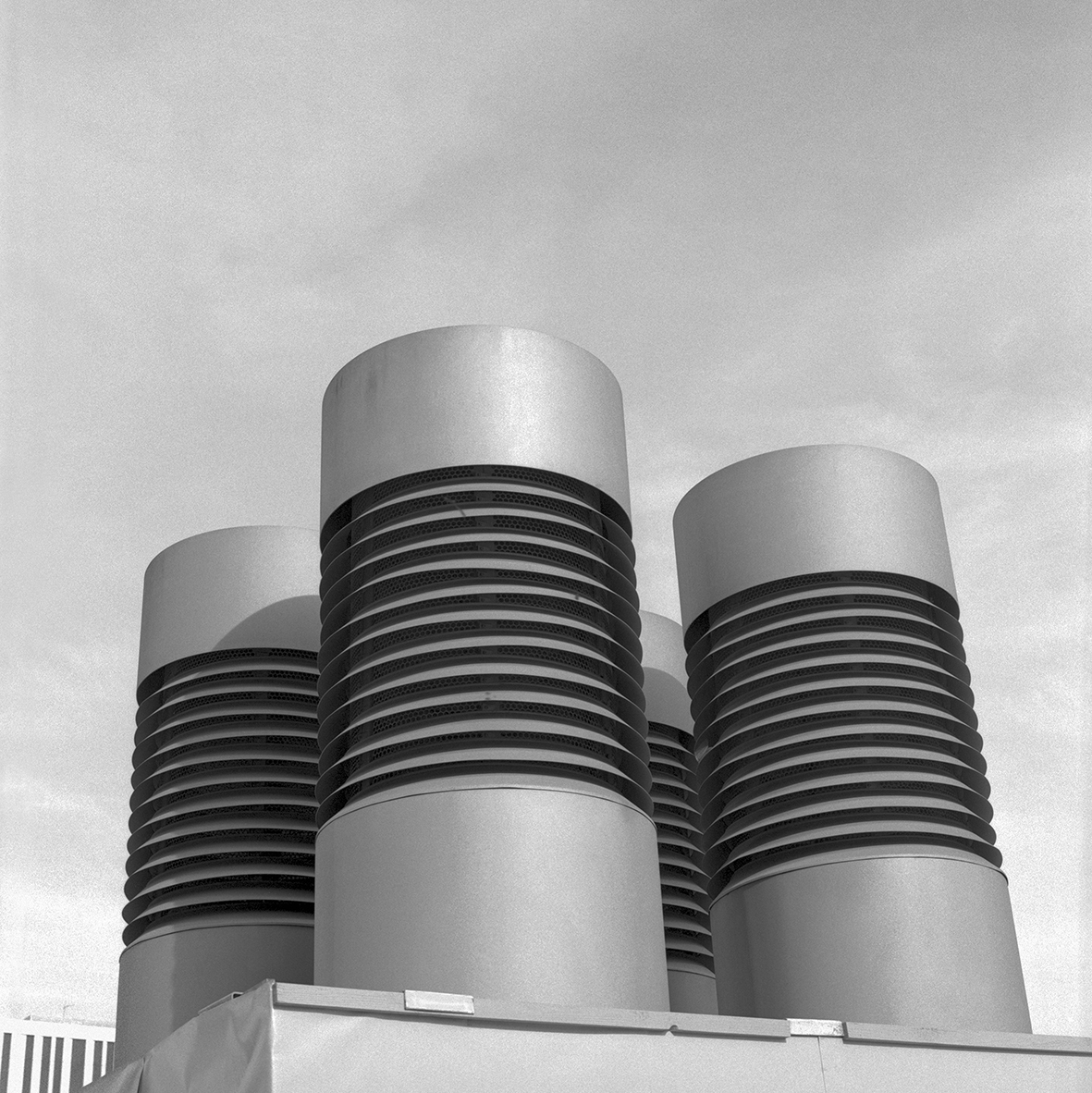
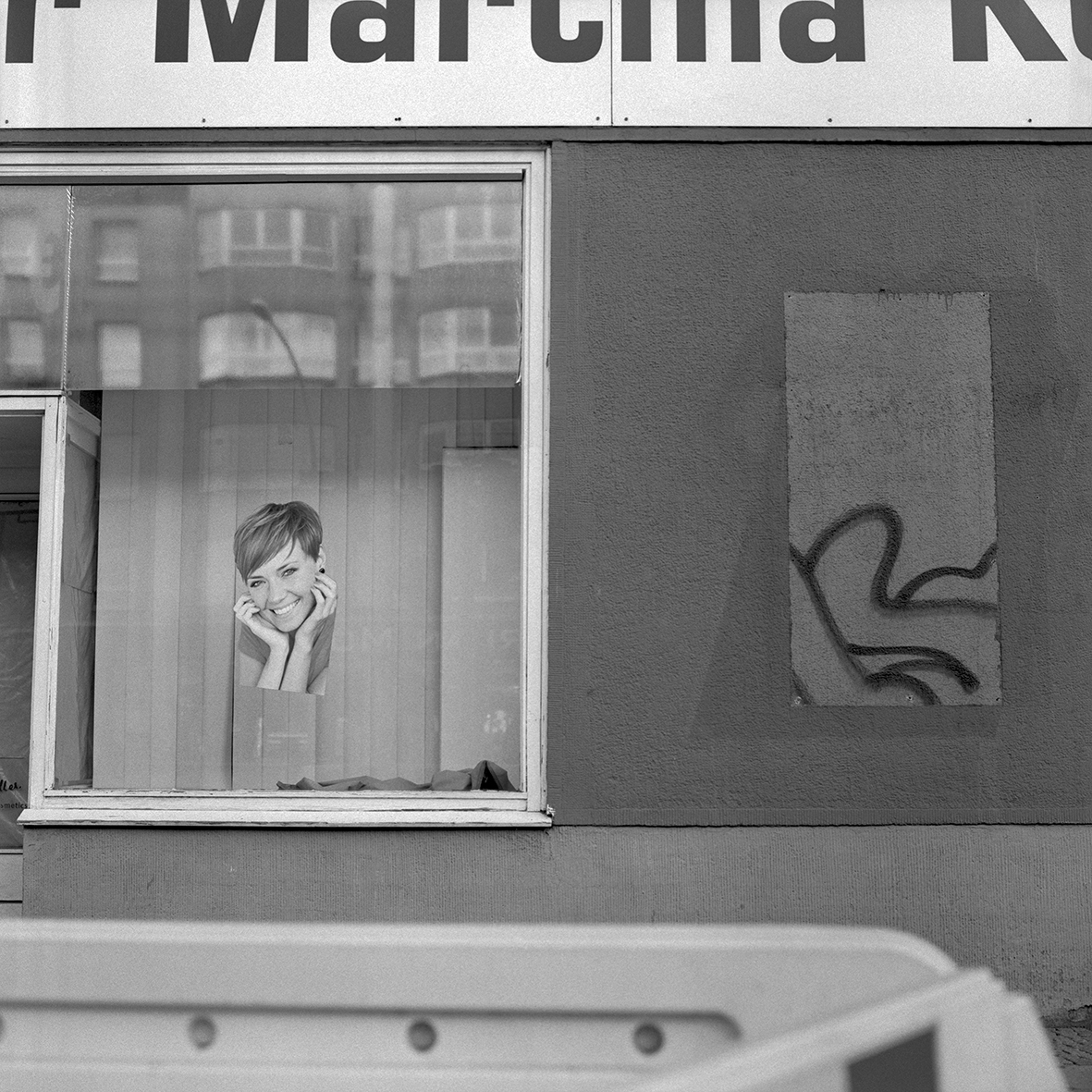
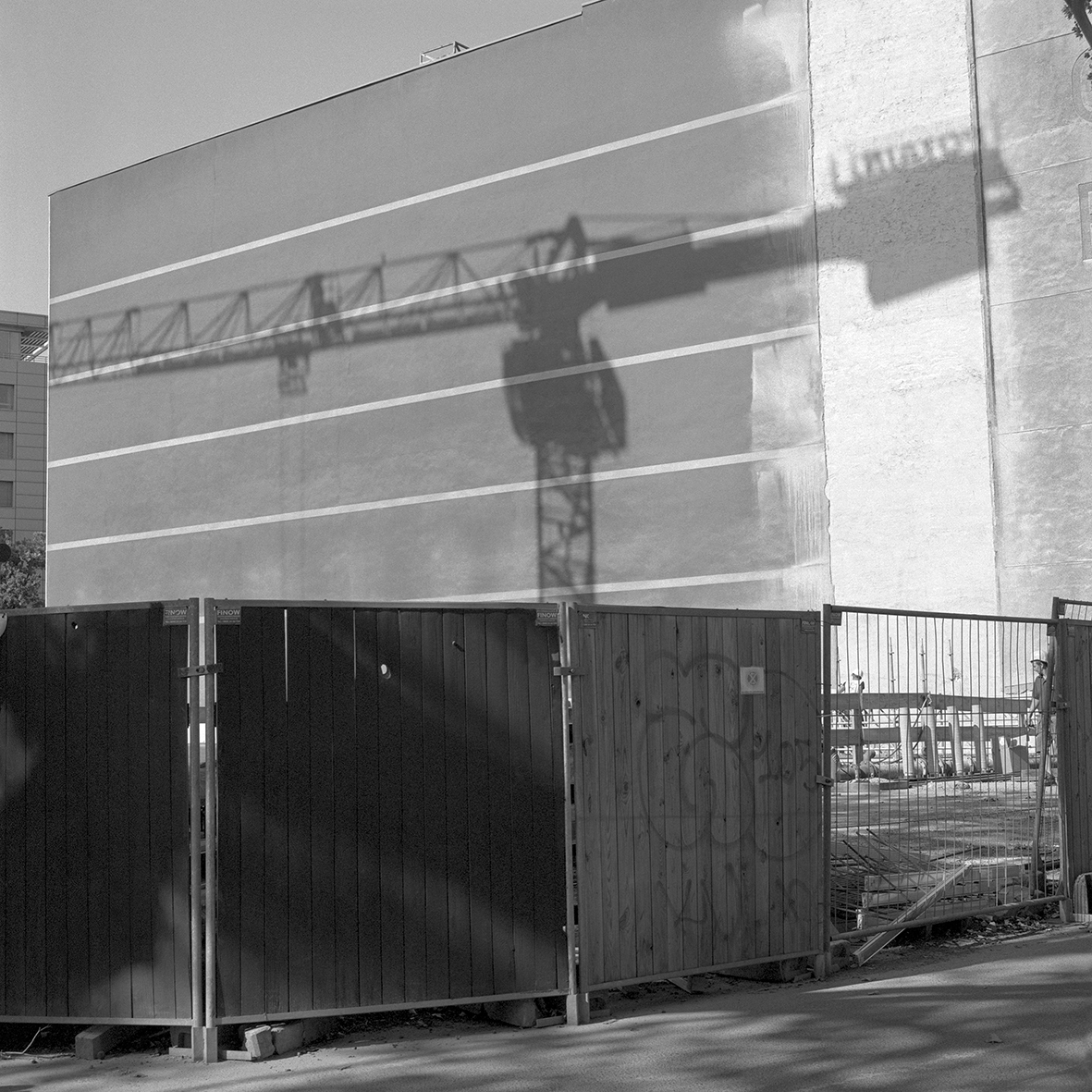
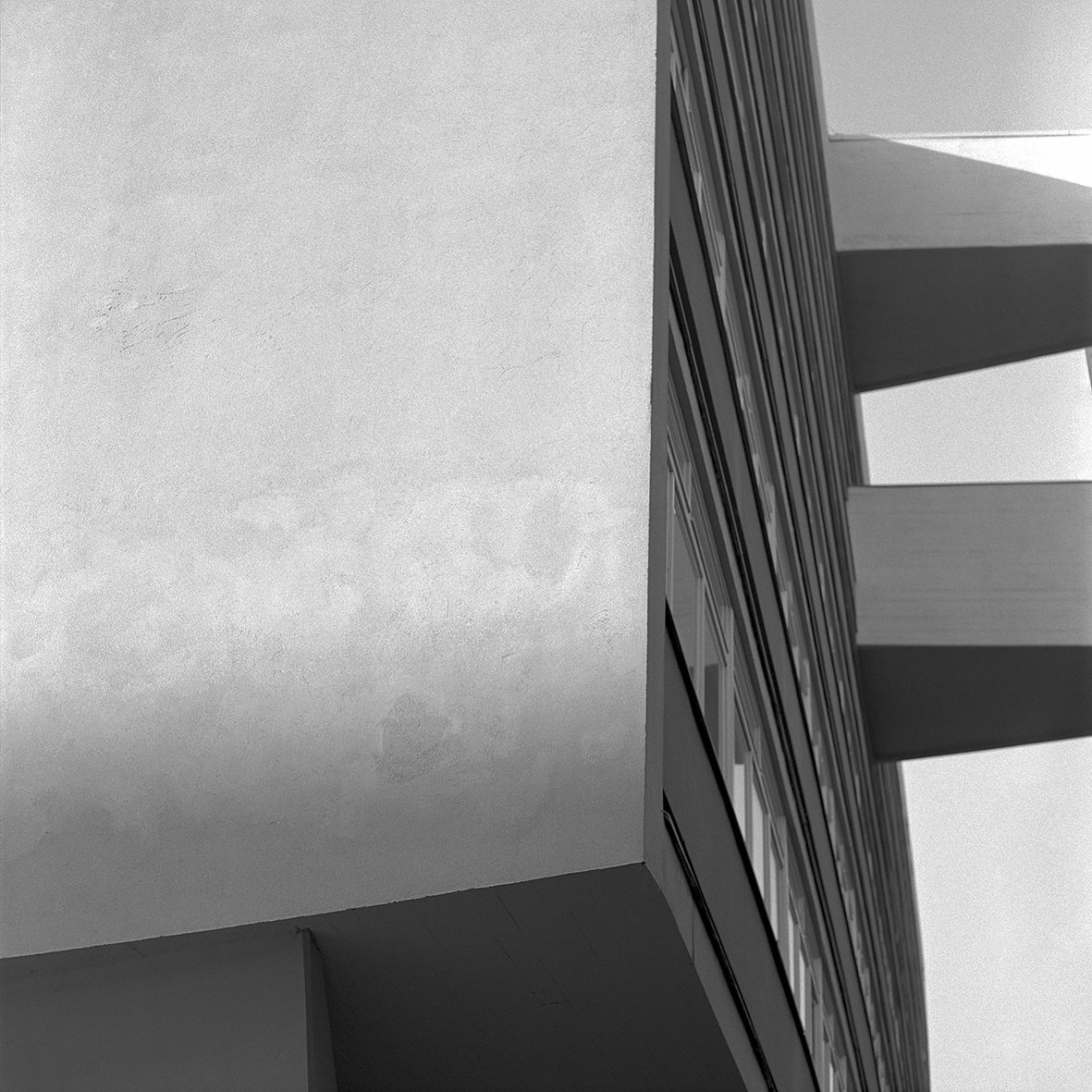
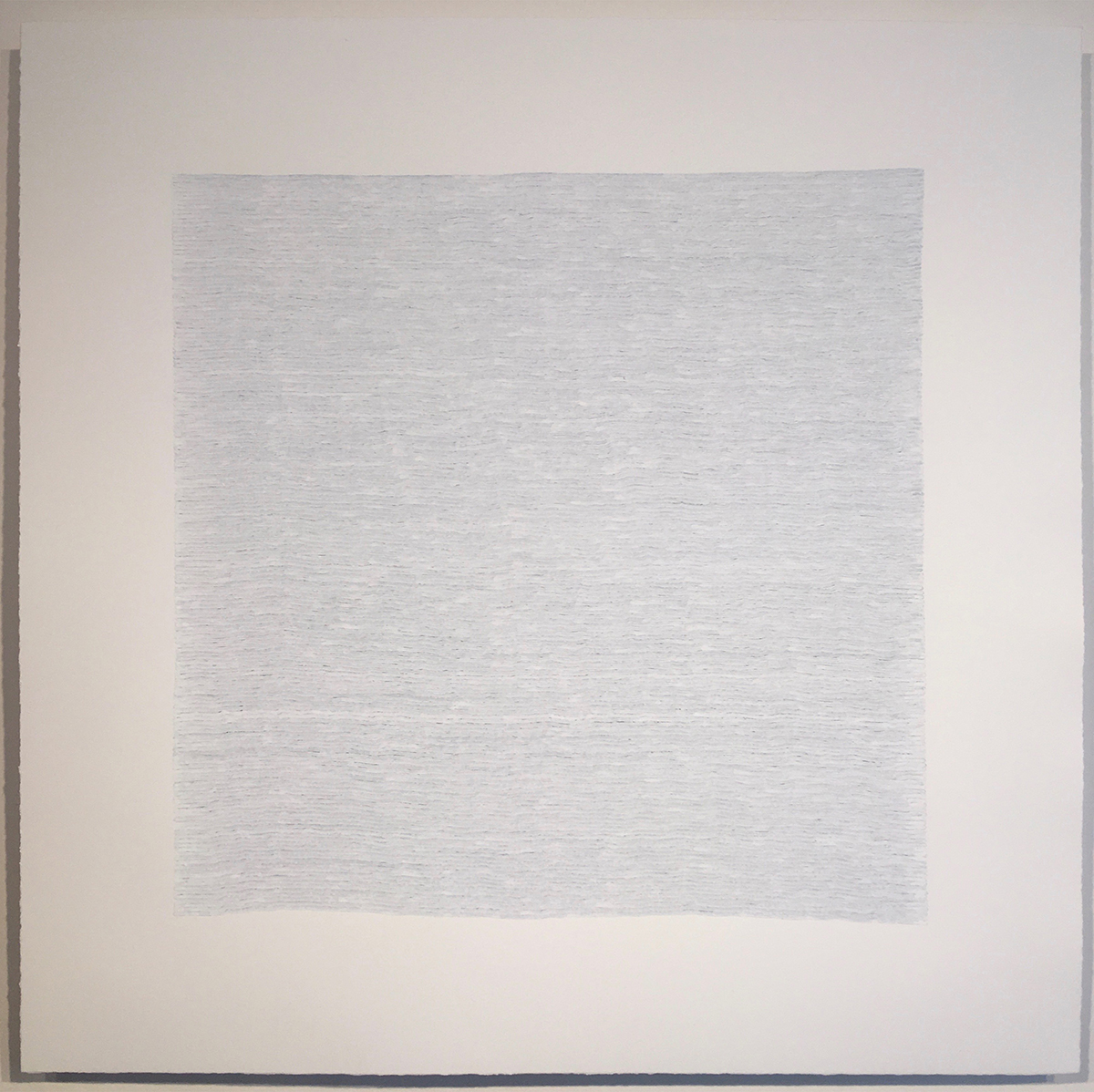
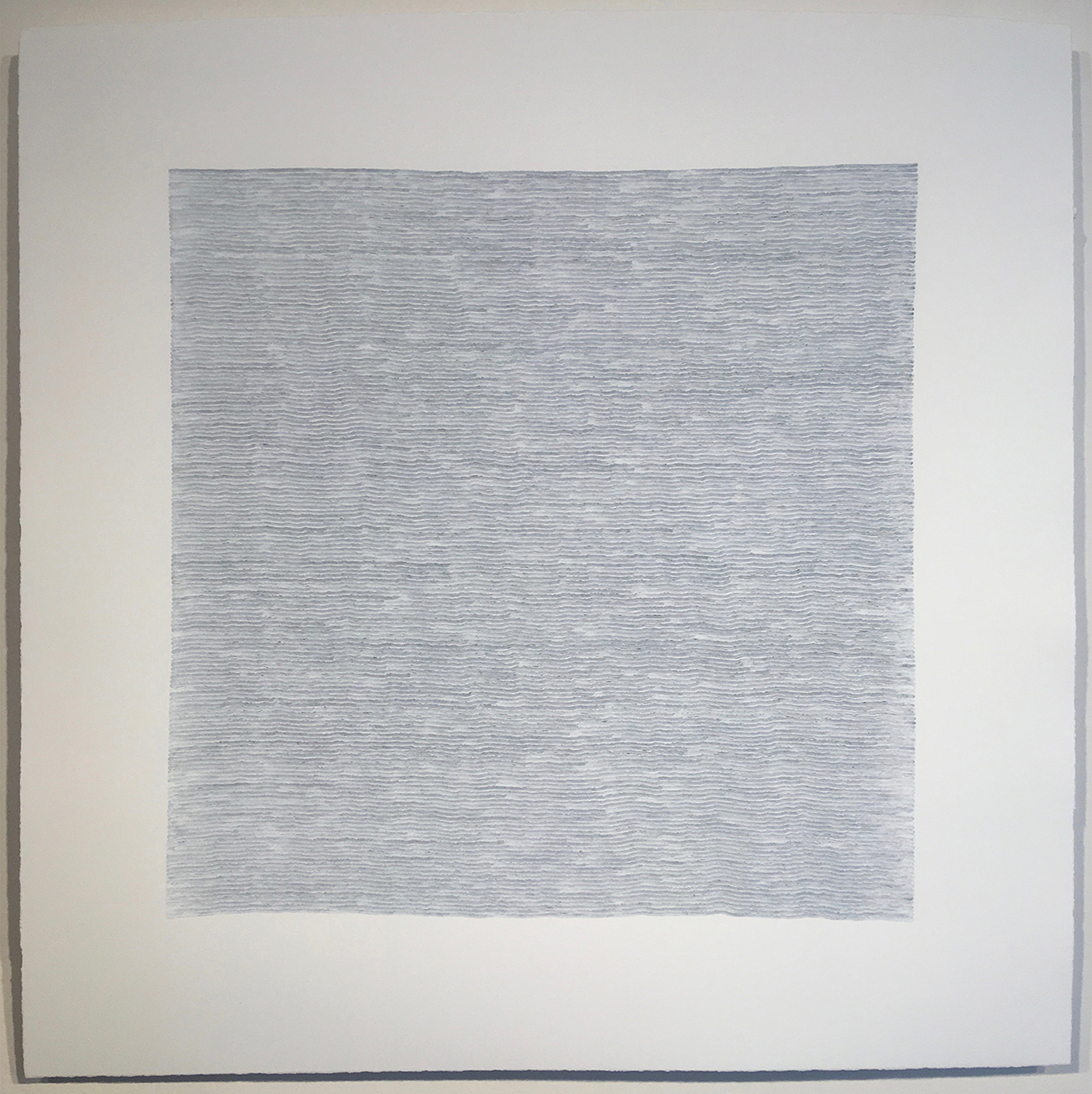
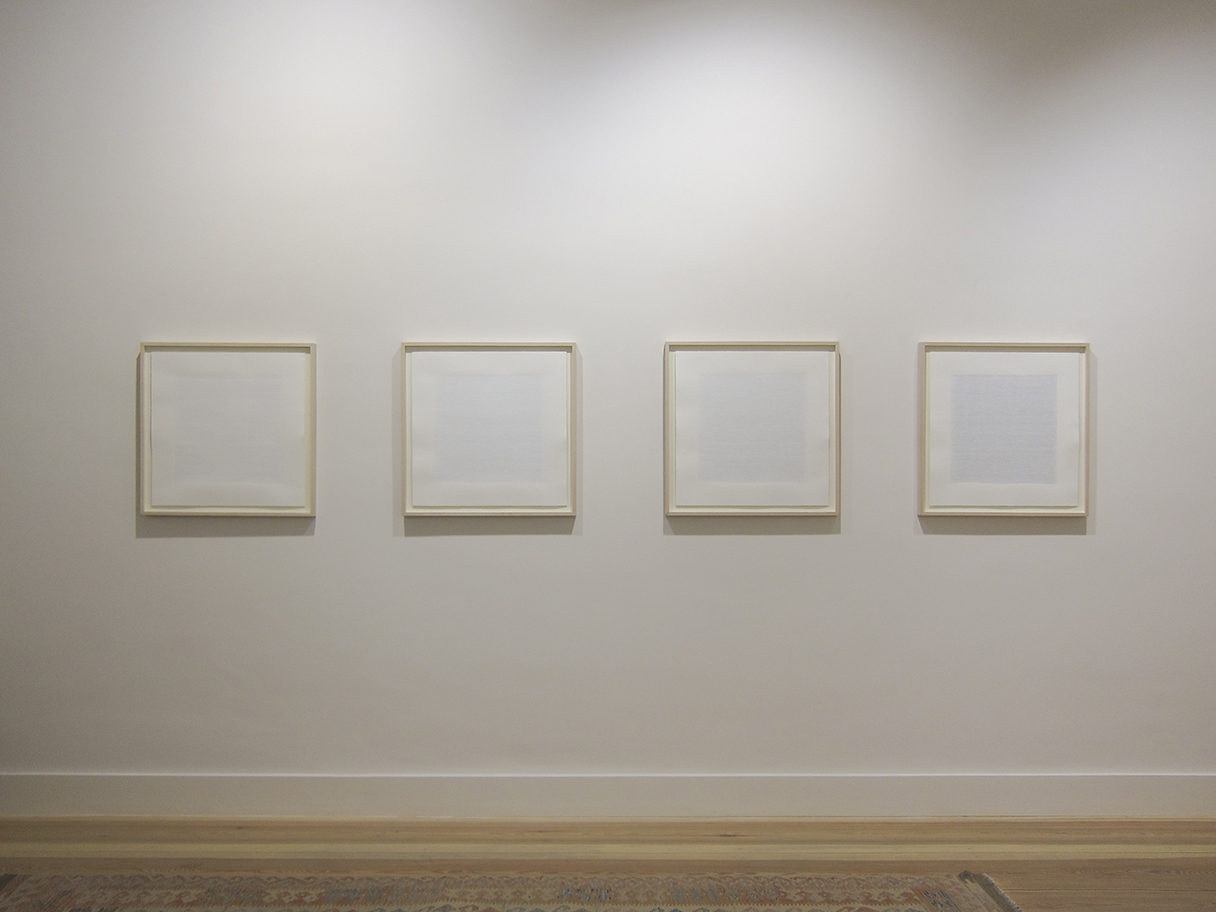

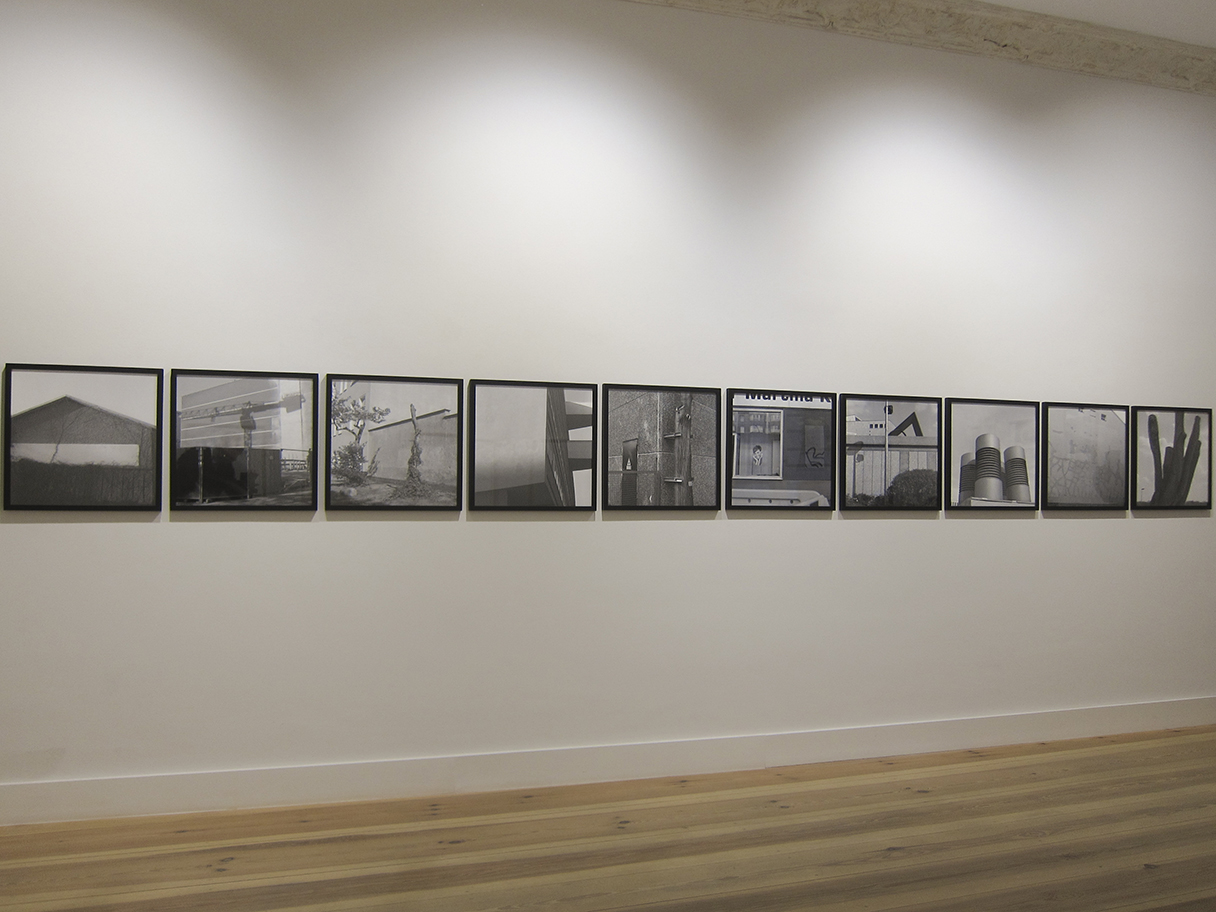
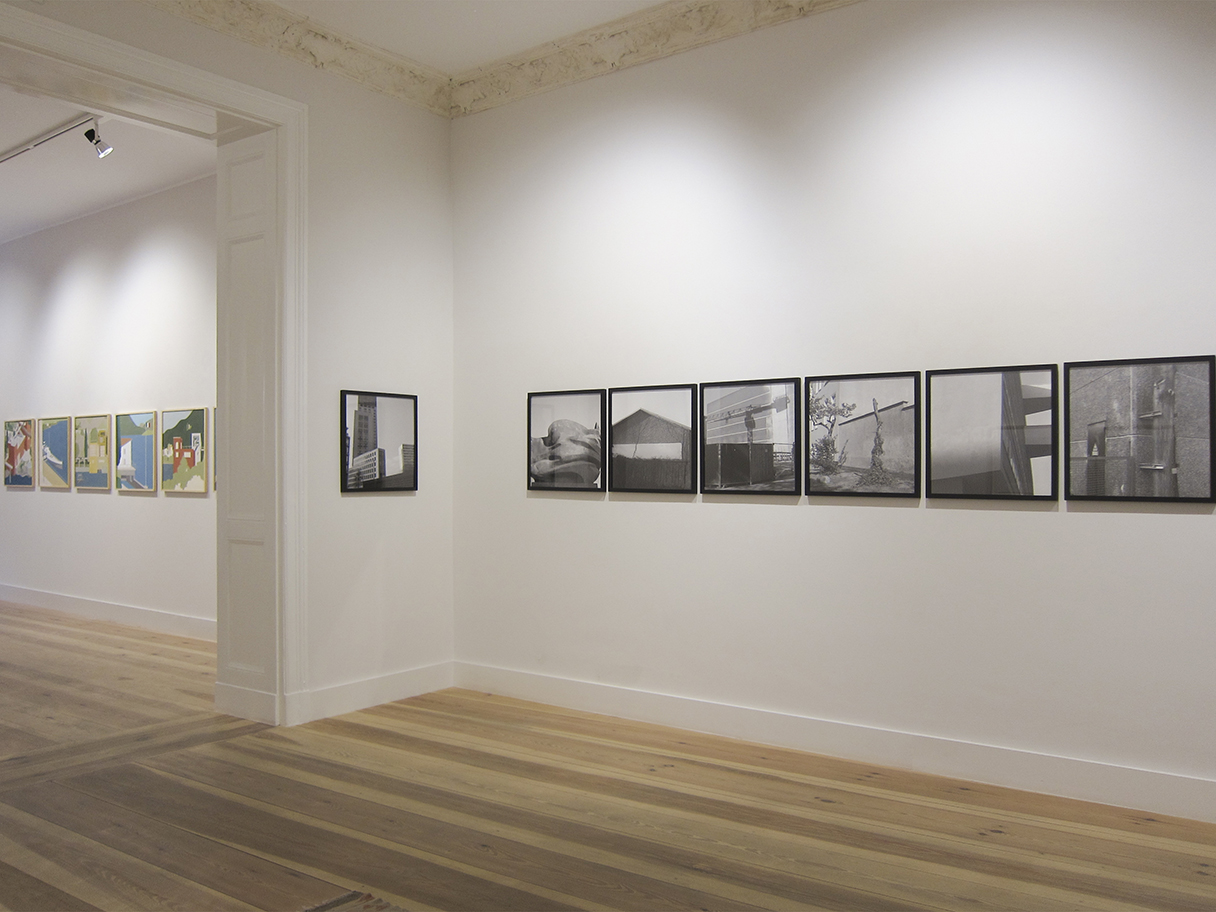
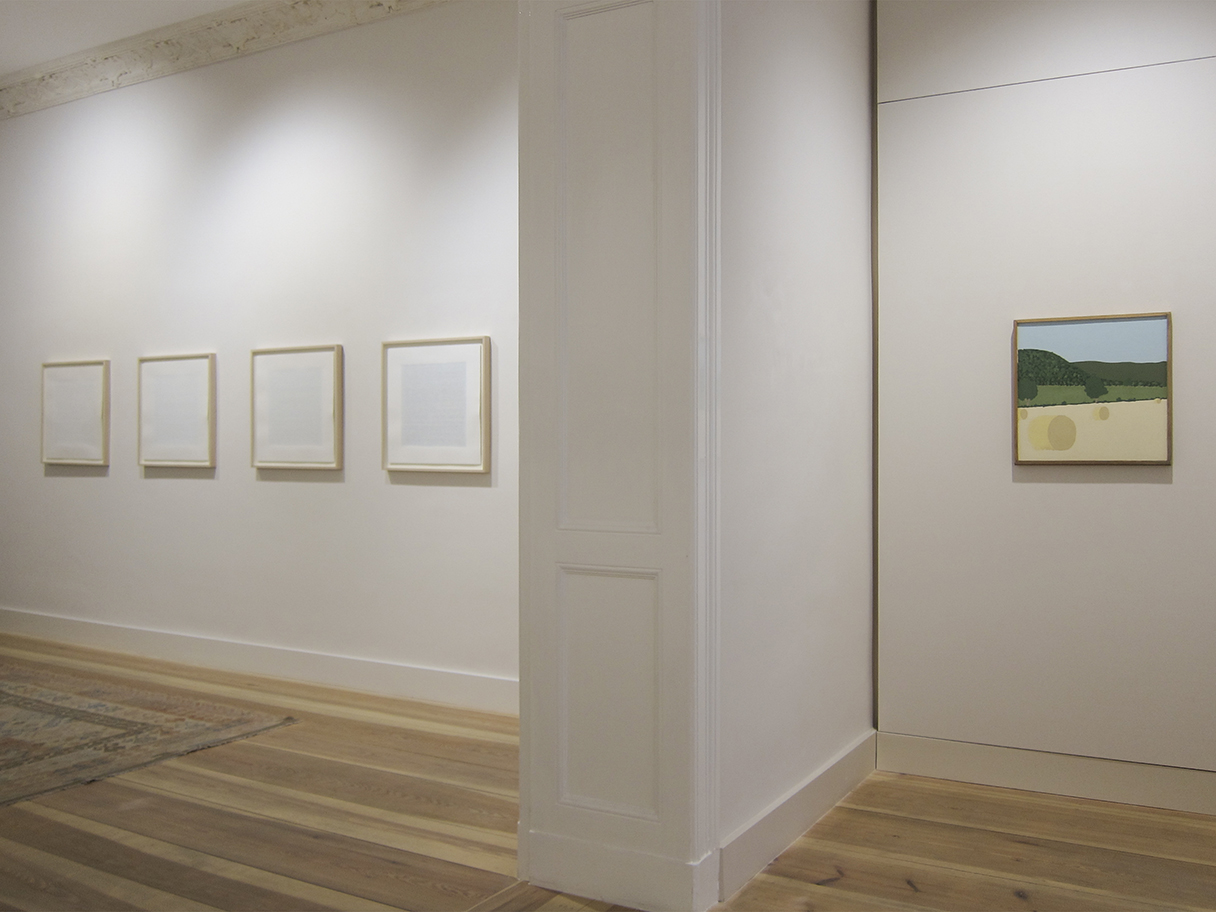
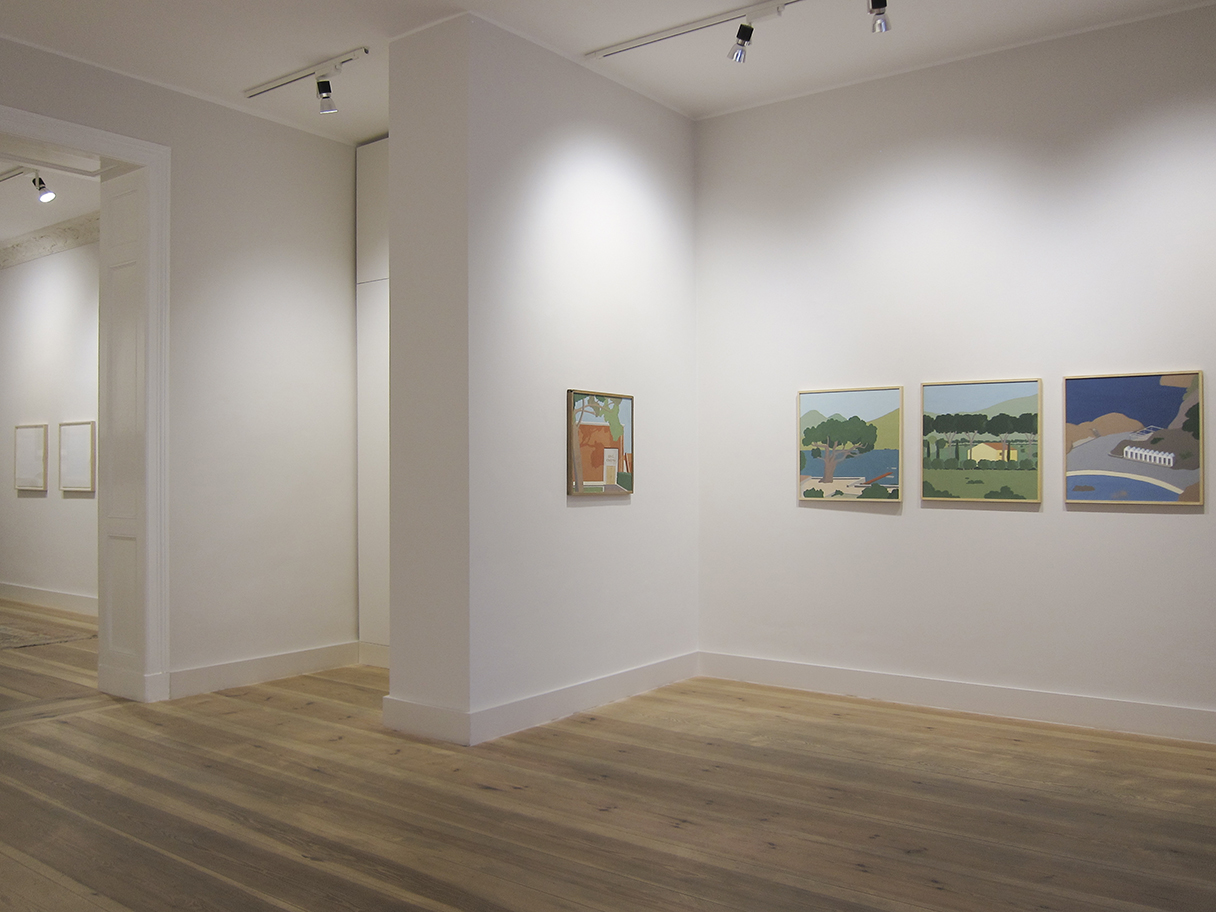
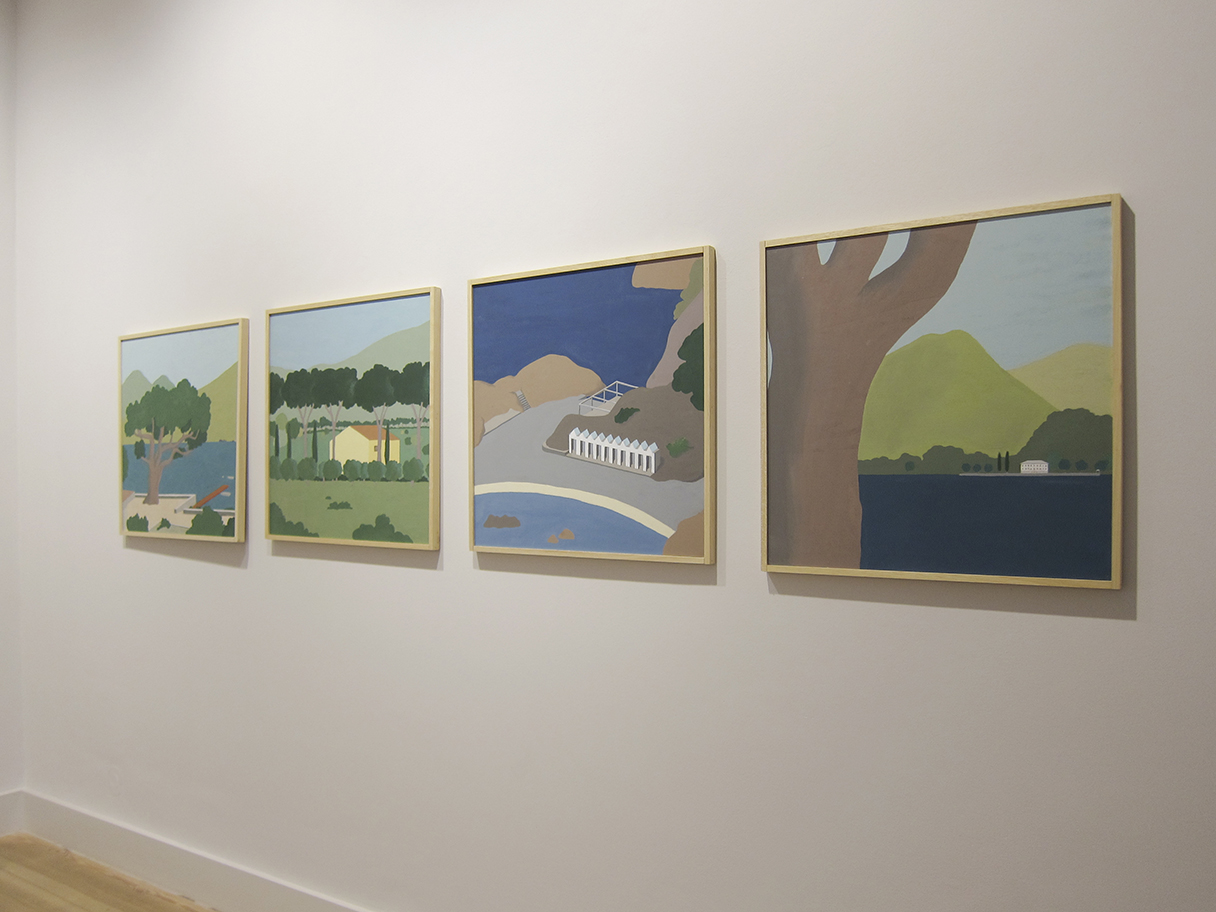
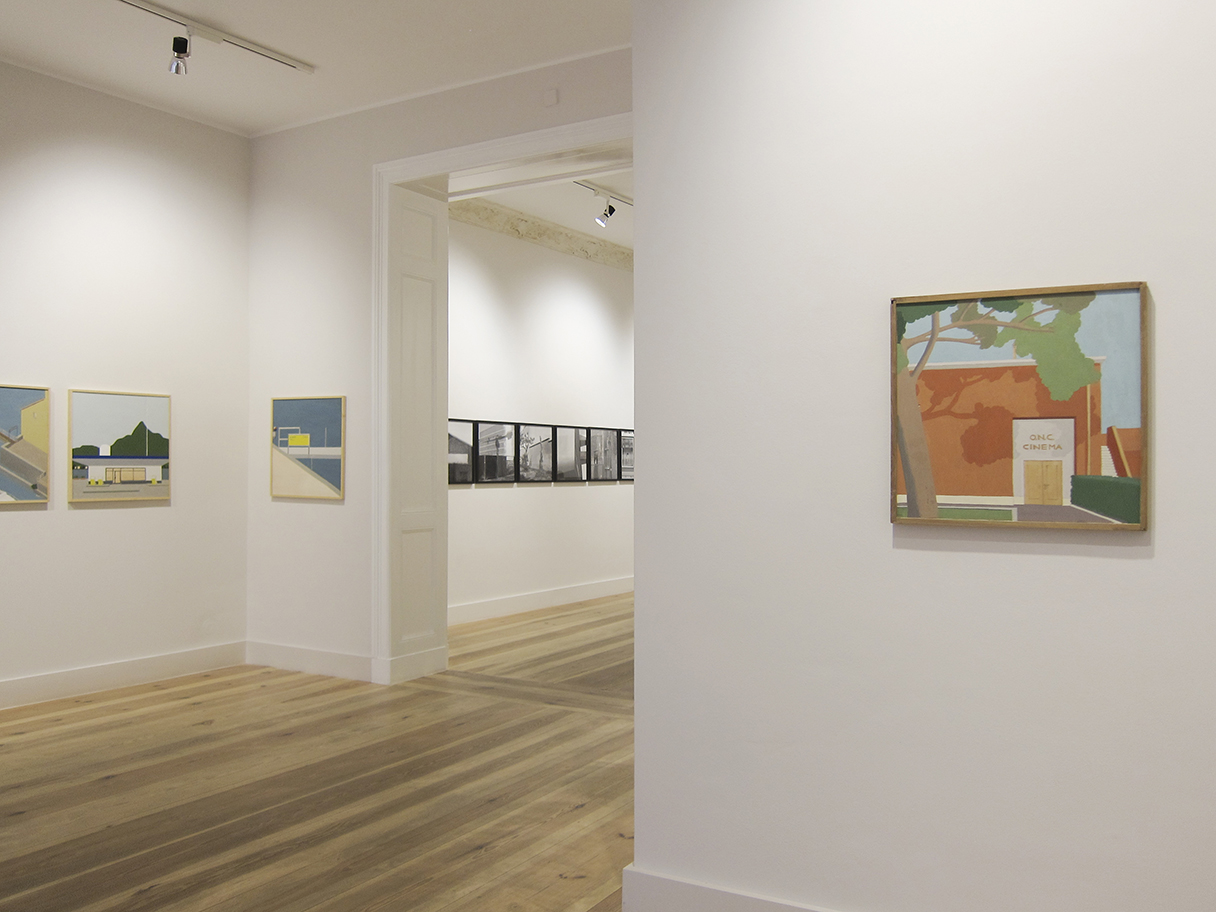
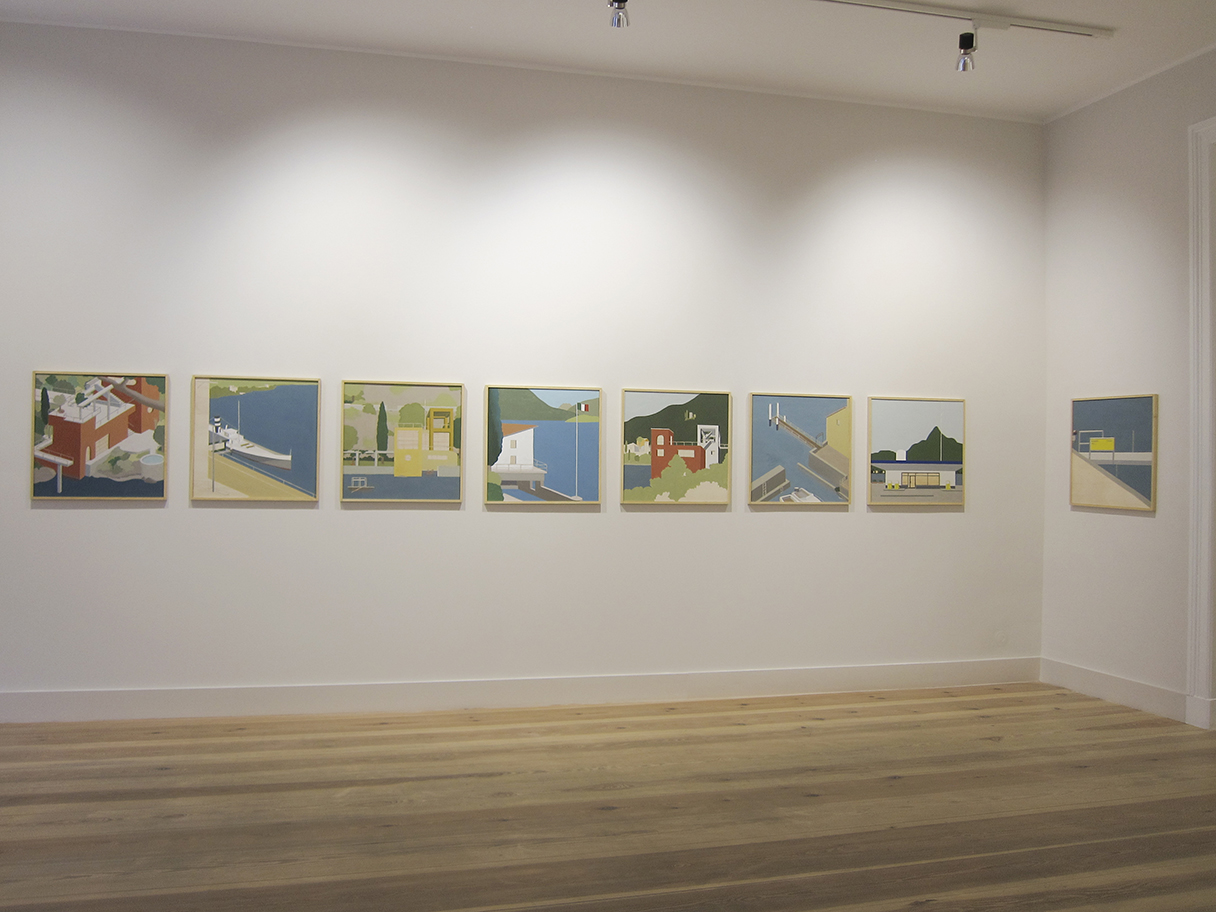
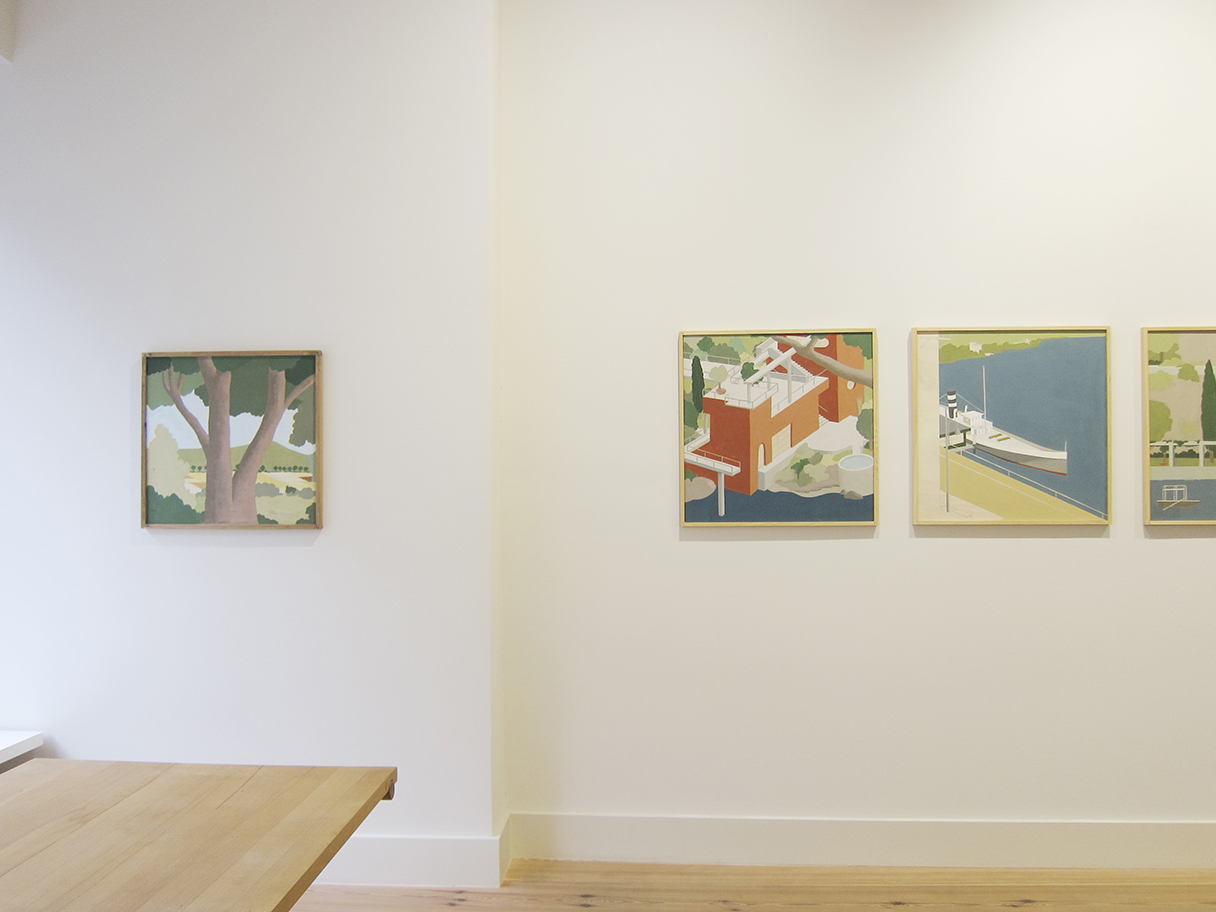
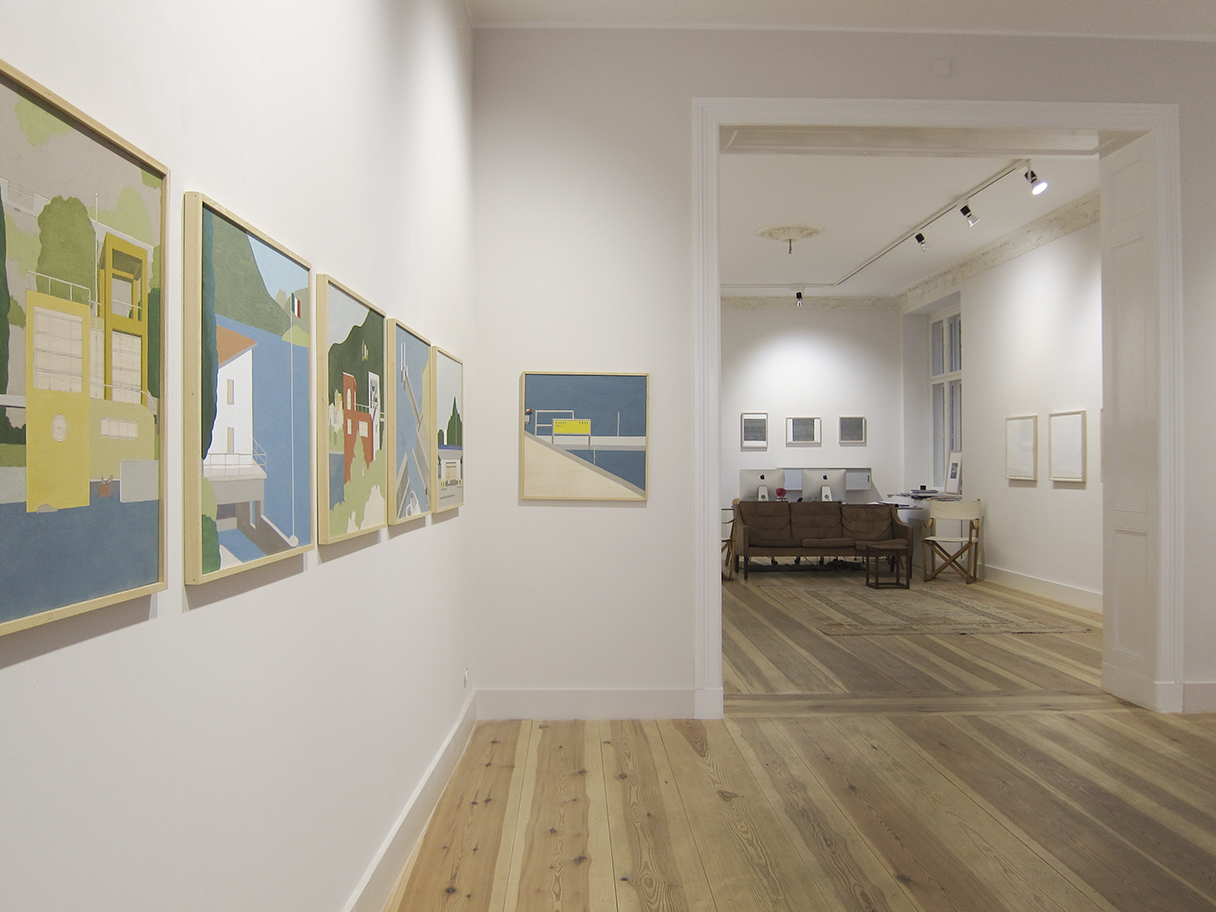
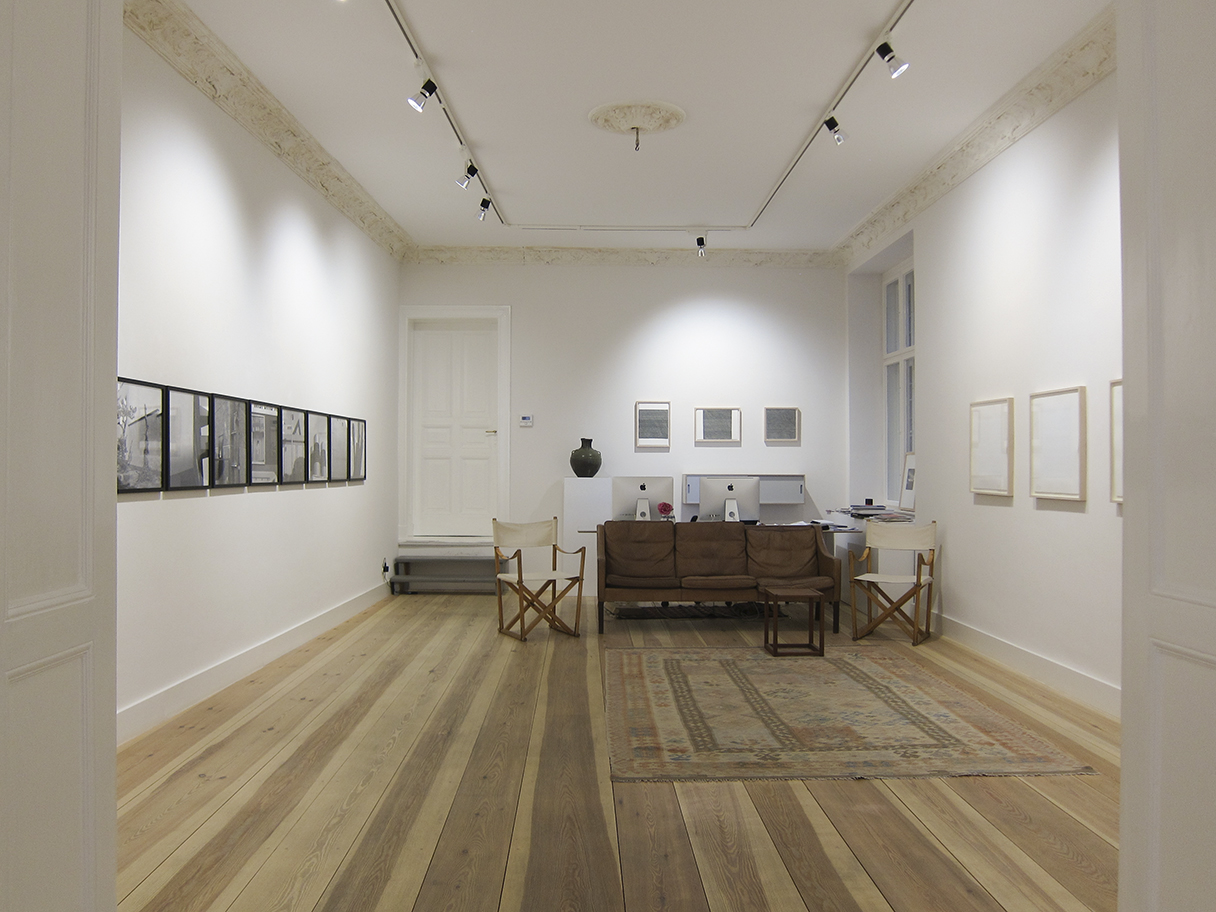
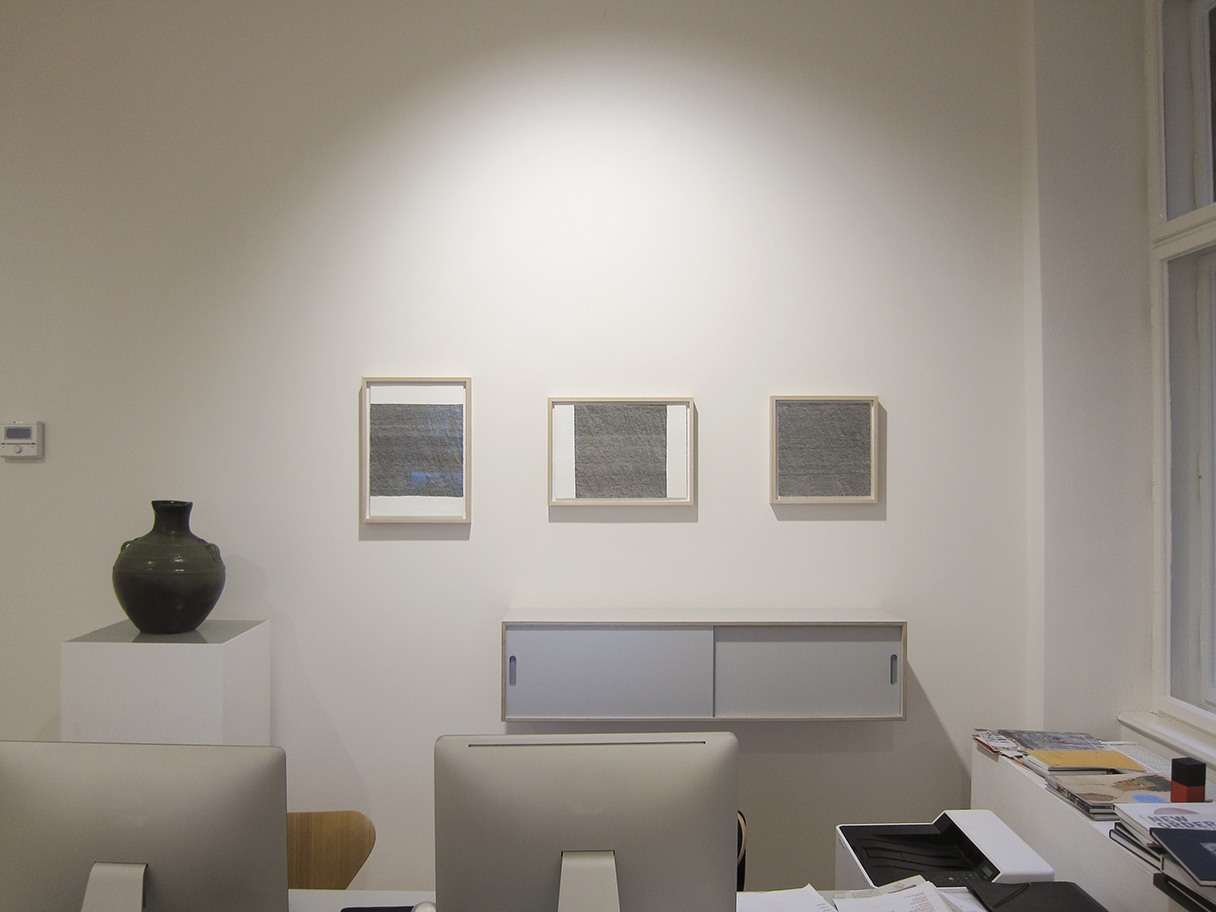
Stadt Land Fluss
Mit ‘Stadt Land Fluss’ setzt die Galerie Albrecht ihre Überlegungen zu den Begriffen «abstrak» und «figurativ» fort. Die Bilder von Zoran Minic, Fotografien von Maria Mölko und Zeichnungen von David Connearn sind beides. Anders als in der vorhergehenden Ausstellung zum Thema «Landschaft» präsentiert «Stadt Land Fluss» verbundene Einzelpositionen, es wird ein Gegensatz aufgebaut, der sich in der Verbindung auflöst. Das Verbindende zwischen Stadt und Land ist der Fluss. Er fliesst sowohl durch die Stadt als auch übers Land, viele menschliche Ansiedlungen liegen an seinen Ufern. Er ist ihr Herz.
Der Gegensatz zwischen Stadt und Land auf der einen Seite und dem Fluss auf der anderen Seite liegt nicht nur in der verschiedenen Umgebung und Lebensweise, sondern abstrakt gesehen ist es ein Gegensatz zwischen Statischem und Fliessendem. Statisches wird durch Fliessendes verbunden. In der Ausstellung besteht er zwischen Fotografie und Malerei, sie werden durch die Zeichnung verbunden. Der Künstler und Schriftsteller Giorgio Vasari (1511-1574) betitelt die Zeichnung als den Ursprung der bildenden Künste. Zu seiner Zeit hab es die Fotografie noch nicht, alles wurde von Hand geschaffen. In der Fotografie steht nicht mehr die Hand, sondern das Auge im Mittelpunkt. Die Hand dient als Mittel zum Zweck.
Dies liesse sich ebenso über die Bilder von Zoran Minic sagen. Der Pinsel ist der Mittel zum Zweck, wichtiger ist die Vorzeichnung. Die Farbe wird aufgetragen und an manchen Stellen auch weggelassen – dort ist dann nur die Zeichnung zu sehen. Für die Zeichnung ist die Hand Voraussetzung – oder könnte der Computer sie ersetzen?
David Connearn hat es ausprobiert und seine Zeichnungen, in denen er mit dem Rotring Tintenstift akribisch Linie nach Linie über das Papier zieht, durch ein eigens entwickeltes Computerprogramm nachzeichnen lassen. Der Computer hatte nichts Gleichwertiges geschaffen – dies ist vielleicht nur eine Frage der Zeit.
Die Zeichnung lässt sich als erste mit einem äußeren Hilfsmittel gemachte menschliche Äußerung ansehen – auch der Pinsel oder der Fotoapparat sind äußere Hilfsmittel. So ist sie vielleicht doch der Ursprung, der alles verbindet und die von Maria Mölko mit dem Fotoapparat geschaffenen City-Artifacts lassen sich als mit dem Auge geschaffene Zeichnungen ansehen.
David Connearn (1952, lebt in London) schloss sein Geschichtsstudium am Queens’ College in Cambridge ab, bevor er die Slade School (1979-81) besuchte, wo er in den Bereichen Bildhauerei und Experiment tätig war. Dort entwickelte er den zeichnerischen Prozess, der seither im Mittelpunkt seiner Arbeit steht. Von 1980-95 war er Assistent bei Sol LeWitt. Sein zeichnerisches Werk wird seit den 1980er Jahren international ausgestellt und ist in den Sammlungen des British Council, des British Museum, des Victoria & Albert Museum und der Arts Council Collection sowie in einer Reihe von bedeutenden öffentlichen und privaten Sammlungen in Europa, Japan und den USA vertreten.
Zoran Minić ist ein Architekt, Designer und Maler. Er hat einen Master-Abschluss in Design an der Domus Academy, Mailand erlangt. Nachdem er jahrelang als Partner von Aldo Cibic gearbeitet hatte, gründete er zusammen mit Dragana Minić das multidisziplinäre und experimentelle Büro POP Solid, in dem sie Design-Erzählungen und Architekturprojekte entwickeln. Zoran gehört zu den Gründern von «Recession Design», einer Forschungsgruppe, die nach neuen Do-it-yourself-Designlösungen sucht. Zwei Bücher über ihre Arbeit wurden von Rizzoli veröffentlicht. Iconography of a landscape» ist Teil einer Erkundung über den Comer See und die Maremma.
Maria Mölko begann als Malerin und erwarb 2007 einen Bachelor-Abschluss in Grafikdesign an der University of the West of England. Dort brachte sie sich selbst die Fotografie bei und zog später nach London, um in der Modebranche zu arbeiten. Ihre Arbeiten wurden in Modezeitschriften veröffentlicht, unter anderem in der Vogue und im Tank Magazine. Im Jahr 2021 schloss sie ihr Studium der Fotografie an der Ostkreuzschule für Fotografie ab. Ihre aktuelle Arbeit beschäftigt sich im weiteren Sinne mit der menschlichen Existenz im postmodernen Zeitalter.
With the exhibition ‘Stadt Land Fluss’, Galerie Albrecht continues its exploration of the terms ‘abstract’ and ‘figurative’. The paintings by Zoran Minić, the photographs by Maria Mölko, and the drawings by David Connearn are both. Unlike the previous exhibition on landscape, ‘Landschaft’, ‘Stadt Land Fluss’ does not present unconnected individual positions; rather, a contrast is built up that is resolved in the connection. What connects city and countryside is the river. It flows both in the city as well as the countryside, many human settlements are located by a river. The river is their heart.
The contrast between city and countryside on the one hand and river on the other hand lies not just in the different environments and ways of life, but seen abstractly, it is a contrast between the static and the flowing. In the exhibition, it lies between photography and painting, which are connected by the drawings. The artist and writer Giorgio Vasari (1511-1574) calls drawings the origin of the fine arts. In his time – photography did not exist yet – everything was created by hand. In photography, however, the focus is no longer on the hand, but on the eye. The hand is only a means to an end.
This might also be said of Zoran Minić’s paintings. They are painted by hand, but more important is the preliminary drawing, to which paint is then applied, but also left out in some areas – where the drawing remains visible. For these works, the hand is essential – or could a computer also replace it?
David Connearn tried it out and had his drawings, which he carefully draws line after line on a sheet of paper with his Rotring ink pen, redrawn by a specially designed computer program. The computer did not create anything equal – but perhaps that is just a question of time.
The drawing can be described as the first human articulation made with a tool – the brush and the camera are also tools. So perhaps the drawing is the original source after all that connects everything, and the City Artefacts that Maria Mölko creates with the camera can also be seen as just that: as drawings created with the eye.
David Connearn (1952, lives in London) took a degree in History at Queens’ College Cambridge before attending the Slade School (1979-81) in the Sculpture and Experimental Departments, where he established the drawing process which has been central to his work since that date. From 1980-95 he was a sculptural assistant to Sol LeWitt. His work in drawing has been exhibited internationally since the 1980s and is represented in the collections of The British Council, The British Museum, The Victoria & Albert Museum and the Arts Council Collection, together with a number of prominent public and private collections in Europe, Japan and the USA.
Zoran Minić (1964, lives and works between Milan and Lake Como) is an architect, a designer and a painter. He holds a Master’s Degree in design at Domus Academy, Milan. After years working as a partner with Aldo Cibic, he founded POP Solid with Dragana Minić,a multi-disciplinary and experimental practice where they develop design narratives and architectural projects. Zoran is among the founders of ‘Recession Design’, a research group looking for new Design Do it Yourself solutions. Two books were published of their work by Rizzoli. ‘Iconography of a landscape’ is part of an investigation on Lake Como and Maremma.
Maria Mölko started out as a painter and in 2007 acquired a bachelor in graphic design at the University of the West of England. There she taught herself photography and later moved to London to work in the fashion industry. Her work has been published in fashion publications, including Vogue and Tank magazine amongst others. In 2021 she completed her studies in photography at the Ostkreuzschule für Fotografie. Her current work investigates in its broader sense the human condition in the post-modern era.